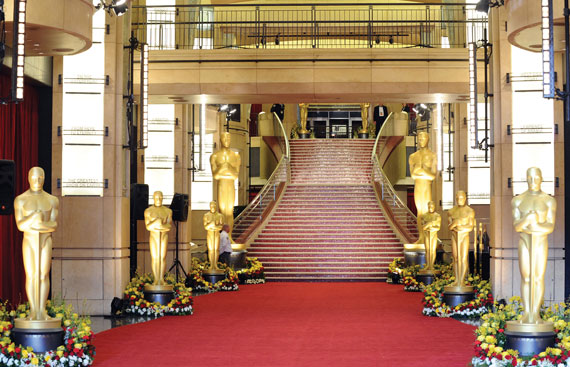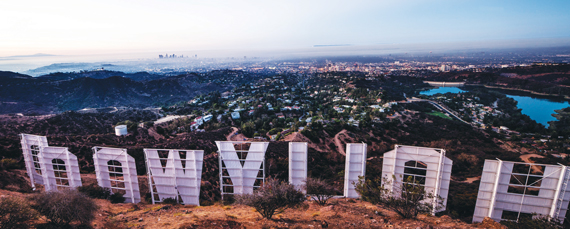Trending
Shazam! Welcome to the New New Hollywood

Call it the new Golden Age of Hollywood. After decades of decline in the late-20th century, when the iconic Los Angeles neighborhood sank into a morass of crime and decay, an infusion of capital is spurring a local revival. Initially, the City of Los Angeles invested more than $100 million in redevelopment in the early aughts, paving the way for private investment. Now developers are creating the area’s first real Class A office space and thousands of new rental apartments. Even Old Hollywood is stepping in — Paramount Pictures recently won approval for a 1.4 million-square-foot studio expansion.
A shake-up in content creation has driven companies specializing in streaming media, virtual reality and website development to grab space next to the “dream factories” that have defined Hollywood for the past century.
Although traditional film studios have mostly moved on from their longtime homes on Sunset, Gower and Melrose in favor of the Valley, newcomers like Netflix, Amazon and Legend 3D are taking huge blocks of commercial space in the neighborhood film studios once called home.
Brokers have dubbed the land rush for Hollywood creative workspace the “Netflix effect.”
“There is a significant increase in production demand due to the influx of streaming content platforms,” said Andrew Kirsh, co-chairman of Los Angeles-based law firm Sklar Kirsh, who advises entertainment companies on property transactions.
Streaming video giants Netflix and Amazon have been doubling down on online programming — literally. Both companies more than doubled their spending on original content creation from 2013 to 2015, with Netflix’s spending soaring to $4.91 billion, and Amazon’s outlay for original content jumping to $2.67 billion.
Amazon is producing such shows as “Bosch,” “Transparent” and “The Man in the High Castle.” Netflix — which has original series like “Orange Is the New Black,” “Travelers” and “The Fall” — recently announced that within the next two years, half of its programming would be original.
“These streaming media companies don’t really own their own physical facilities or professional studios,” said Bill Humphrey, general manager at Hudson Pacific Media, a division of the L.A.-based real estate investment trust, which has done deals with major new-media firms such as Netflix. “So the demand is going to continue to increase.”
 Hudson Pacific reported an 8.6 percent uptick in revenues, to $164.6 million, in the company’s third quarter 2016 earnings call, which executives attributed in part to an increase in demand for space from the media and entertainment sectors. Revenue from its media and entertainment properties increased by 22.1 percent year-over-year, to $12.5 million.
Hudson Pacific reported an 8.6 percent uptick in revenues, to $164.6 million, in the company’s third quarter 2016 earnings call, which executives attributed in part to an increase in demand for space from the media and entertainment sectors. Revenue from its media and entertainment properties increased by 22.1 percent year-over-year, to $12.5 million.
Company CEO Victor Coleman said a good portion of the growth stemmed from the firm’s relationship with Netflix, which has inked deals for multiple stages and production offices at Hudson Pacific’s Sunset Bronson Studios in Hollywood, as well as two full office buildings on the lot: the recently completed 323,000-square-feet Icon office building and the 92,000-square-foot Cue building, which is under construction. Netflix now accounts for more than 500,000 square feet in Hudson’s portfolio.
“All of our various deals with Netflix highlight the massive shift in content,” Coleman said. During the earnings call, he noted that AT&T’s prospective acquisition of Time Warner signaled further industry realignment. “As a growing number of media companies spend billions to produce a pipeline of original content for streaming anytime anywhere, our studio ownership affords us unparalleled facilities and capabilities to participate in that growth.”
Coleman said he expected Hudson Pacific to lease production facilities to other companies expanding into the online content space, such as Google and Amazon, as they build out their digital infrastructure, global branding and distribution.
Cable television is also competing for production studio space. For example, a corporate campus that was once the Hollywood headquarters for CBS is now home to Viacom companies, including MTV, Comedy Central, BET and Spike TV.
“By capitalizing on these industry shifts, we expect studio cash flow to continue to become increasingly predictable and digital office space even more valuable,” Coleman said. “This confirms our original investment thesis regarding the studios — that this is an element of our business with significant potential to grow.”
Kilroy Realty, another L.A.-based REIT, has also benefited from this trend. In July 2016, Legend 3D — the company that created 3D effects for the new “Ghostbusters” movie — signed a lease at Kilroy’s Columbia Square campus in Hollywood, bringing the campus to 85 percent occupancy.
Legend 3D — which has a studio client list that includes Lionsgate, Tidal, Warner Brothers and Annapurna Pictures — plans to move 100 employees into the 27,000-square-foot space.
A land grab
Some real estate investors who never dreamed of jumping into the film studio business are now rushing to get a share of the action, despite some of the challenges associated with owning production facilities, such as relatively short-term leases and maintaining facilities that are often in disrepair. For these investors, studio buys are often viewed as opportunities to own swaths of land in some of L.A.’s hottest neighborhoods.

Looking out across Los Angeles from behind the famous sign in the Hollywood Hills
“The real underlying value of the studios is that they’re sitting on a lot of land,” said Michael Hackman, the founder and CEO of Hackman Capital Partners, an L.A.-based real estate investment company.
Hackman’s firm acquired Culver Studios from Lehman Brothers Holdings for $85 million in 2014. Although this facility is not located in the Hollywood neighborhood — Culver City is its own municipality but is mostly surrounded by the City of L.A. — it too has been benefiting from the boom in demand for production space.
Hackman said that being the landlord of production facilities means being willing to accept the challenge of short-term leasing. “All the studios work off short-term leases, maximum a year, because they run in cycles with the television production,” he said. “A show will sign on for a pilot, and you’re not sure if it will get picked up or renewed.” But that may be changing, too.
“We anticipate that increased demand from content creators is going to result in more long-term deals for stage and production office space, like our recently signed 10-year agreement with Netflix at Sunset Bronson,” Humphrey said. “This makes cash flow from the studios, which have historically had shorter-term leases than our office properties, increasingly predictable.”
Hackman had a similar perspective, saying that Culver Studio will be a long-term investment for Hackman Capital Partners. “It’s really hard to assemble parcels of this size in some of these markets. Being able to control those big blocks of land is very attractive.”
After buying the independent studios that served as the filming location for such legendary movies as “Gone with the Wind” and “Citizen Kane,” Hackman said that the company streamlined operations, upgraded facilities and grew revenues.
“A lot of these studios were built back in the era of silent films, so there’s been a hell of a lot of technological advances,” he said. “How content is produced today is very different to how it was done even 10 years ago.”




